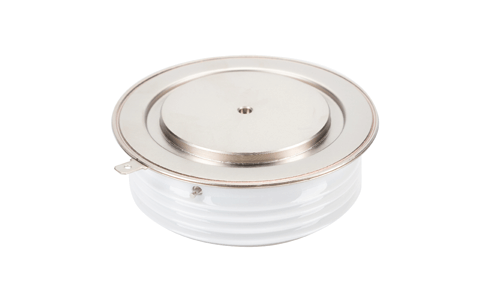
Asymmetric Bypass Thyristors Details
Dynex Bypass Thyristor are designed for the protection of IGBT modules in VSC multi-level applications, where a reduced forward blocking voltage is required.
The design of the bypass thyristor provides greater flexibility to the system designer, allowing compactness, better reliability and facilitating a push towards higher scheme voltages.
They are resistant to fast voltage transients, which can be exposed due to the switching of the IGBT diode. The device structures have greater enhanced hardness to cosmic ray induced failures, which become significant at high DC voltage duty cycles.